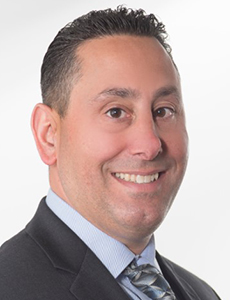Sponsored Content by Nationwide
The E&S Market Is Ready to Tackle Today’s Challenges. Here’s Why

The excess and surplus market continues to enjoy steady growth while conditions in the standard market remain challenging for insureds. With standard lines carriers raising rates, tightening terms and conditions and pulling back capacity, risk managers are turning to E&S solutions for greater flexibility.
“It’s a very exciting time within the E&S market. We’re seeing a lot of acceleration in growth driven by three main factors: poor historical portfolio performance over the last few years in certain segments —particularly transportation, construction and habitational real estate — growing CAT losses within the United States, and the ongoing effects of social inflation,” said Jude DiBattista, leader of E&S Brokerage Casualty at Nationwide.
While the full impact of COVID-19 on the risk and insurance landscape is yet to be seen, the economic hardship created by the pandemic has shaken the financial footing of many carriers, exacerbating these trends.
“The increasing value of claims and the change in legal environment has set off a chain reaction within the industry, causing many carriers to pivot their strategy, cut capacity and reposition underwriting appetite. The E&S market continues to grow because we’re able to provide creative solutions for our customers, understanding their needs and are innovators in areas that are problematic, further enhancing the value of the E&S market and contributing to the accelerated growth,” DiBattista said.
Here’s what makes the E&S market well-positioned for sustained growth as the economy recovers, and what insureds should look for in a carrier partner.
Why E&S Flexibility Is Suited for Today’s Challenges

Jude DiBattista, leader of E&S Brokerage Casualty, Nationwide
With the freedom of rate and form that comes with non-admitted paper, E&S carriers are able to develop more tailored and creative solutions to address unique exposures and changing risk profiles. Risk managers can take advantage of greater underwriting flexibility to build coverage that meets both their insurance needs and their budget constraints.
For example, one way that insurers are looking to limit their exposure in today’s challenging environment is by seeking higher attachment points, creating gaps in the coverage tower. Insureds need to utilize more markets and pull in more policies to plug those holes.
“Historically, it wasn’t uncommon for $25 million to be put up in a lead position. Now, most carriers are reducing that to the $5 million to $10 million range, which is providing opportunities for other carriers to share in the tower. There are opportunities for E&S solutions to help to fill in gaps between primary and excess layers,” DiBattista said.
Custom endorsements or exclusions can also give insureds more control over their exposures.
“After the SARS outbreak in the early 2000s, for example, we saw insurers add communicable disease exclusions onto policies,” DiBattista said.
“However, COVID has shined a new light on this issue and is forcing the insurance industry to reconsider how to address pandemic risks. We’re looking at different policy language where we could add support, and not just take the reactive approach of excluding everything. We’re trying to figure out creative ways from a policy form perspective where we could cover some exposure and help businesses stay resilient through this type of disruption.”
The same creativity and expertise that fuels policy language innovation can also support the development of tailored loss control strategies. For most companies, that means figuring out a way to keep operations running as normally as possible while protecting employee and customer health. From hand-sanitizing stations to enhanced cleaning protocols and sensible sick leave policies, tactics to ensure safety will go a long way in reducing liability and workers’ compensation risks.
“We’re tasked with helping clients get back on their feet, which will take coordination between loss control and claims departments, to identify the pain points and develop targeted interventions that will help to reduce losses,” DiBattista said.
Beyond the pandemic, flexibility and creativity will also enable E&S underwriters to better tackle the unique exposures of emerging sectors, like cannabis, 3D printing and the sharing economy. These businesses come with an unprecedented mix of legal, regulatory and liability risks that admitted carriers may not have an appetite for. These growing segments will be a driving force in E&S market growth for years to come.
“We’re starting to see more and more opportunities in the sharing economy space in particular. Studies have shown that more than 80 million Americans buy products online regularly. Websites like Etsy and Wish are gaining momentum just like Uber and Lyft did. Each brings a unique set of risk and exposure that as an industry we have to be there to solve for,” DiBattista said.
What to Look For in an E&S Carrier Partner
Companies beginning to rely more heavily on E&S solutions should know what characteristics make for a great partner. Specialized, industry-specific expertise tops the list.
“At Nationwide E&S/Specialty, we’re specialists, not generalists. We’re able to provide deep understanding of the industry segments that we serve,” DiBattista said.
That deep understanding comes from a mix of experience and data analytics. “One of our top priorities is learning how to better leverage technology, data and analytics to gain a more granular understanding of risks and loss trends, allowing us to fine tune underwriting and claims management,” DiBattista said.
“It also allows us to improve efficiencies, deliver better decisions and understanding the buying habits of our customers. Technology allows us to take a forward-thinking view of what’s going on in the market and in particular accounts, meaning we can identify leading indicators and monitor trends as they’re emerging. Ultimately, that helps us evolve as a market so we can develop new products as our customers need them.”
Commitment to loss control is another key differentiator. Many insureds are adapting to hardening markets by raising retentions and keeping more of their risk in-house, driving greater prioritization of risk mitigation and loss prevention. Carriers that support customers in these strategies through access to experts and resources create better outcomes for all stakeholders.
“Nationwide has loss control experts in various segments of the insurance industry, focusing on specific risks like premises liability, workplace safety, etc. They work directly with insureds, analyzing their loss history and unique characteristics to identify vulnerabilities and build specific risk mitigation strategies that will improve their operations and make things safer,” DiBattista said.
Perhaps the most valuable trait in an E&S carrier, however, is dedication to innovation and creative problem solving.
“We’re here for our partners to assist them with any question they could potentially have on a risk, pricing, market intelligence, or any problem they face. E&S has always been the market of innovation, and we’re fully committed to partnering with our customers, understanding their needs, and finding solutions to the most difficult challenges,” DiBattista said.
To learn more, visit https://www.nationwide.com/brokers.
About Nationwide
AM Best Rated A+ XV | S&P A+ | Fortune 100 Company
Products underwritten by Nationwide Mutual Insurance Company and Affiliated Companies. Not all Nationwide affiliated companies are mutual companies, and not all Nationwide members are insured by a mutual company. Home Office: One Nationwide Plaza, Columbus, OH. Nationwide, the Nationwide N and Eagle, and other marks displayed on this page are service marks of Nationwide Mutual Insurance Company, unless otherwise disclosed. © 2021 Nationwide Mutual Insurance Company.
This article was produced by the R&I Brand Studio, a unit of the advertising department of Risk & Insurance, in collaboration with Nationwide. The editorial staff of Risk & Insurance had no role in its preparation.










